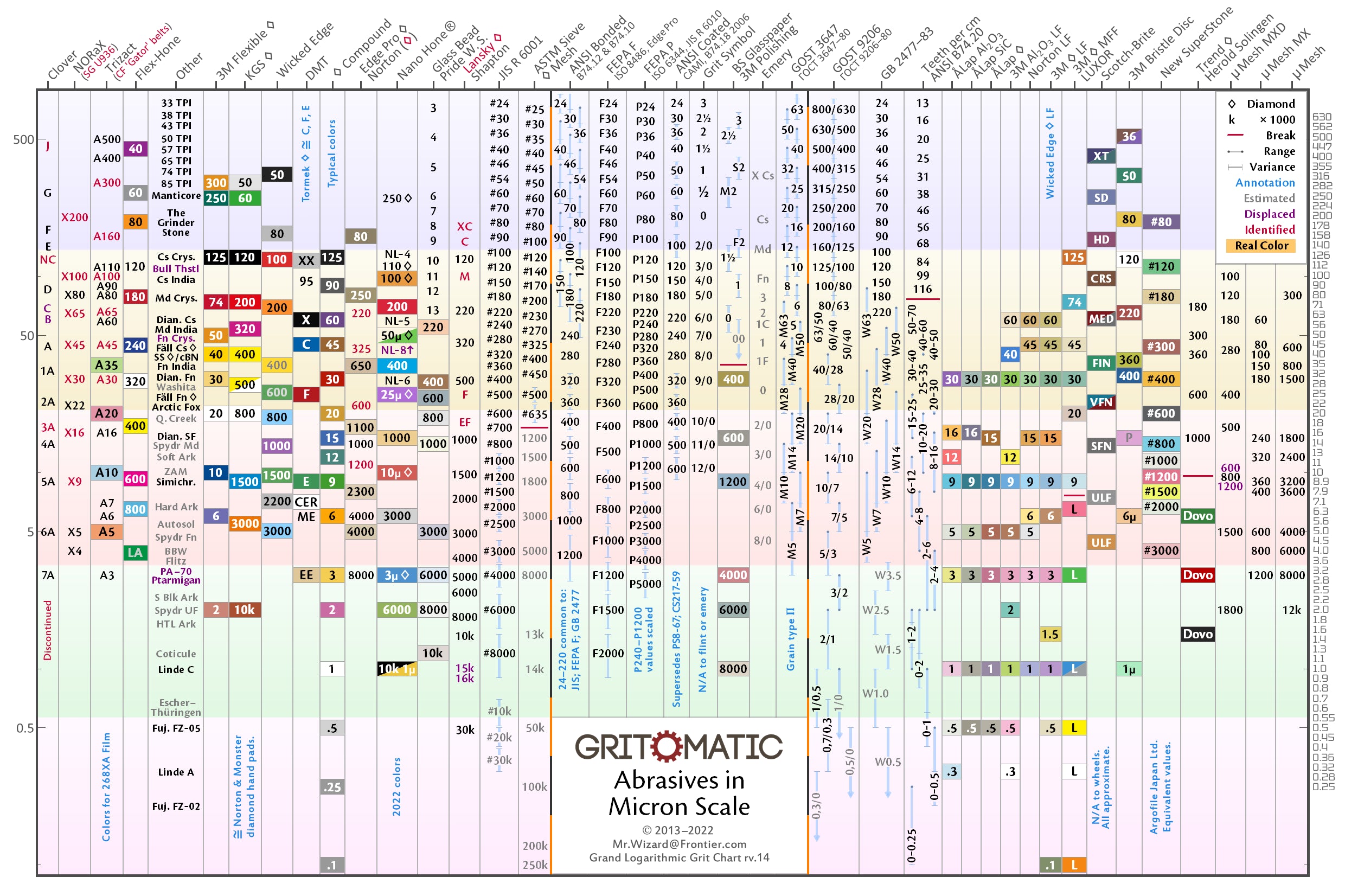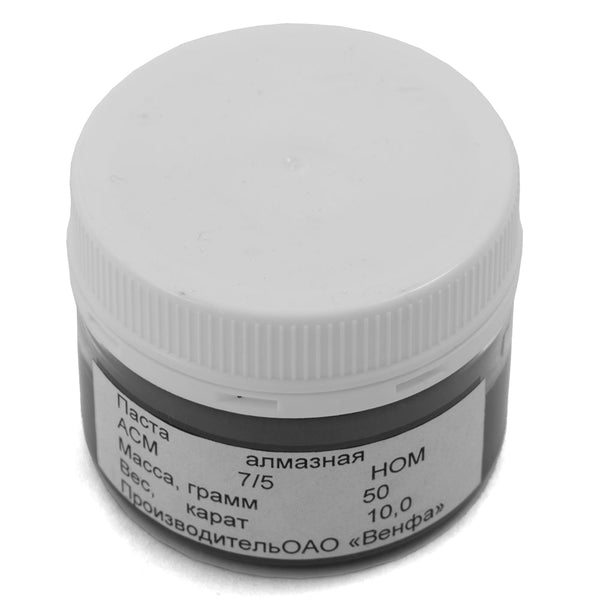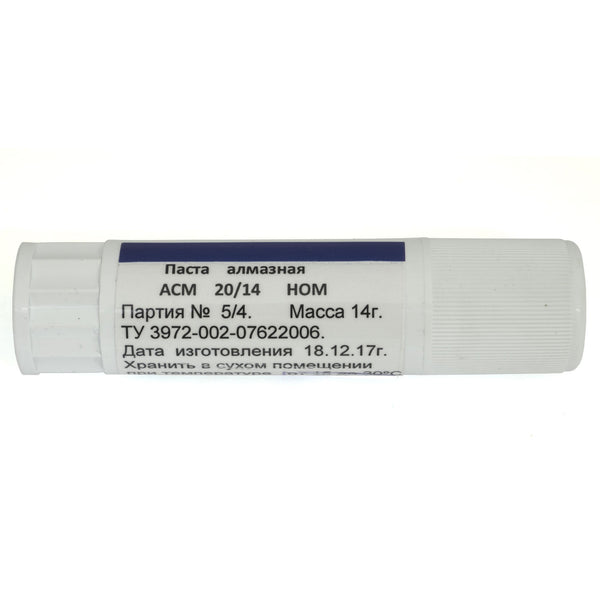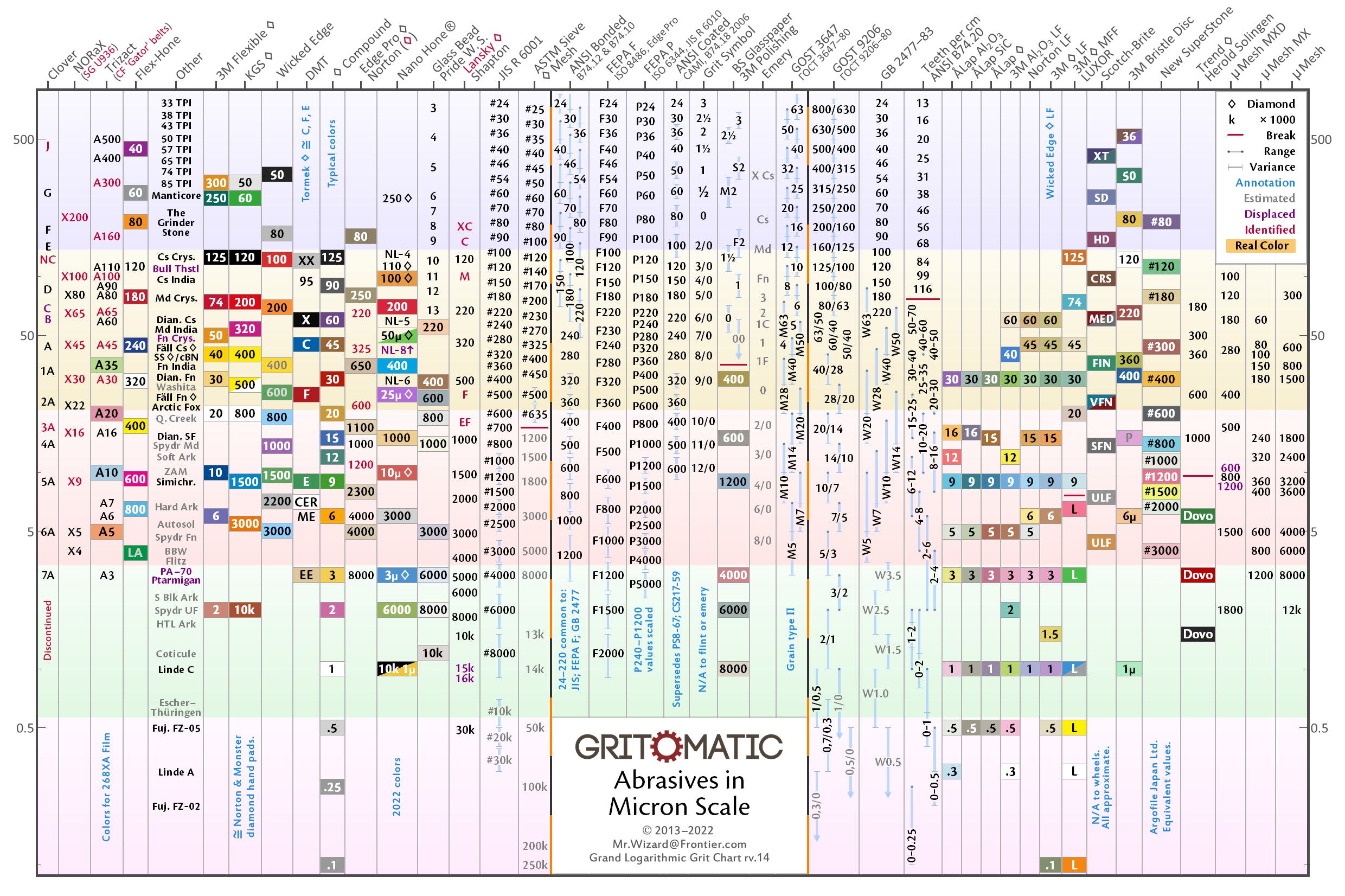Venev Gemini Series Curved Diamonds are designed for sharpening inwardly curved blades in sharpening systems such as Hapstone and TSProf. Diamond sharpening stones deliver excellent performance on knives made of any steel.
Gemini Series Generation 2 is updated curved diamonds featuring Metal Matrix Composite (MMC) binders. MMC is a new generation of metallic binders. Gemini Gen.2 utilizes a reinforced copper–tin bronze alloy MMC: MS1 binder for F80–F800 grits and MB1 binder for F1200.
Gemini stones consist of a diamond-bearing layer with curved working surface on a metal backing. The diamond-bearing layer contains evenly distributed diamond grains with metal bonding. Metal bonding gives the sharpening diamond stone a long lifespan.
All Venev Diamonds use FEPA-F grit classification.
- Working surface: 150 x 12mm (6" x ½")
- Abrasive: Synthetic Diamonds with copper-tin alloy bonding
- Curvature: 50mm
- Geometry tolerance: up to 0.2mm
Metallic Diamonds are recommended to be used with water as a lubricant for the best feedback. The diamond does not absorb water. Splash water on the stone's surface. Dry usage is an acceptable practice, although it results in faster wearing and speeds up stone loading.
Venev Diamonds may have the geometry tolerance up to 0.2mm. Because diamonds are curved, extra lapping by a customer is not permitted. Gemini diamonds don't require any preparations.
Gemini diamonds may seem bald out-of-the-box. This is normal.
Metallic diamonds may become darker over time due to natural metal oxidizing. It does not affect the sharpening.
| Code | Diamond Series | CBN Series | Dimensions | Bond | Class |
|---|---|---|---|---|---|
| CBR | Cerberus | 100×17×10×2×2 | Resin | Dual‑sided Premium | |
| UMI | Ursa | 150×16×10×1×1 | Resin | Dual‑sided Standard | |
| CEN | Centaur | Centaur³ | 150×25×10×1×1 | Resin | Dual‑sided Standard |
| MON | Unicorn🚀 | Unicorn³🚀 | 150×25×14×3×3 | Resin | Dual‑sided Premium |
| CMA | Greater Dog | 98×40×10×1×1 | Resin | Dual‑sided Standard | |
| PHE | Phoenix | 200×83×10×1×1 | Resin | Dual‑sided Standard | |
| DRA | Dragon | 200×83×12×2×2 | Resin | Dual‑sided Premium | |
| CHA | Chameleon🚀 | Chameleon³🚀 | 150×25×6×3×3 | Metallic | Dual‑sided Solid |
| SCO | Scorpion | 100×25×8×2 | Resin | Single‑sided Mounted | |
| ORI | Orion | Orion³ | 150×25×6×3 | Resin | Single‑sided Mounted |
| SGR | Archer 𝘎𝘦𝘯𝟤⌛ | Archer³ | 150×25×3 | Metallic | Single‑sided Variative |
| GEM | Gemini 𝘎𝘦𝘯𝟤🚀 | 150×12×3 R40 | Metallic | Single‑sided Mounted | |
| SCL | Sculptor🚀 | 150×12×3 | Metallic | Single‑sided Mounted |
Resin Dual Premium Resin Dual Standard Resin Single Mounted 🚀 Released ⌛ Soon
Dimensions notation.
Monolayer solid abrasives have 3 numbers: length × width × thickness.
Single-sided abrasives with backing have 4 numbers: length × width × full thickness × thickness of abrasive.
Dual-sided abrasives have 5 numbers: length × width × full thickness × thickness of abrasive #1 × thickness of abrasive #2 (both sides)
If thickness is variable, the minimum thickness is noted.
For curved abrasives, a radius of curvature inmm is added: R40.
Metallic Binders (MMC)
- M2-01 - Copper-tin bronze alloy.
- MS-1 - Metal-matrix composite (MMC) - Copper-tin bronze alloy reinforced with silicon carbide.
- MB-1 - Metal-matrix composite (MMC) - Copper-tin bronze alloy reinforced with boron carbide.
- MS-1A - Metal-matrix composite (MMC) - Aluminum-copper alloy reinforced with silicon carbide.
Resin Binders
- B1-10 - Boron-modified phenolic resin (BPF) composite - Made of powdered bakelite, copper additive
- B2-01 - Boron-modified phenolic resin (BPF) composite - Made of liquid bakelite, iron additive (softer than В1-10)
- В2-01М - Boron-modified phenolic resin (BPF) composite - Made of liquid bakelite, copper additive (softer than В2-01)
- OSB (OCB) – A proprietary phenolic resin composite.
(OSB and OCB refer to the same binder; the difference arises from a transliteration quirk of the Cyrillic “ОСБ,” which can be rendered as either “OSB” or “OCB” in Latin script.)




Pressure control means applying only the minimum, steady force needed for the abrasive to begin cutting. With guided systems, you are holding the stone, guide rod, and stone holder in the air, so the total mass matters. A lighter setup improves tactile feedback and makes it easier to keep pressure consistent.
Why It Matters
- Edge integrity: Excess pressure can bend the apex and move contact away from the actual cutting edge.
- Cutting efficiency: Too much force causes metal deformation instead of clean cutting, reducing sharpness and polish.
- Abrasive wear: Overload accelerates uneven wear, grain chipping, and unwanted scratches.
- Geometry control: High force makes it harder to maintain angle accuracy, especially on thin bevels or low angles.
- Heat and fatigue: More pressure creates excess friction and heat, which can harm both the edge and the user’s consistency.
Best Practices
- Start light: Increase pressure only until you feel the abrasive begin to cut, then keep it steady.
- Reduce with finer grit: The finer the stone, the lighter the touch required.
- Maintain consistency: Equal pressure on both sides removes previous scratches and ensures even refinement.
- Use smooth strokes: Controlled, deliberate movements improve feedback and angle stability.
- Keep it lightweight: Choose light stones, guide rods, and holders for better control and less hand strain.
When Pressure Is Too High
- Loss of bite: The abrasive stops cutting effectively even as force increases.
- Edge rollover: The apex deforms or folds, forcing a return to a coarser grit.
- Random scratches: Damaged abrasive grains leave isolated, deep marks.
- Uneven stone wear: The surface loses flatness faster, reducing accuracy and finish quality.
Bottom line: Let the abrasive do the work. Light, steady pressure with a lightweight setup yields sharper edges, longer stone life, and more predictable results.


![Venev Gemini Series Gen.2 Curved Diamond [6" x ½"]](http://fr.gritomatic.com/cdn/shop/files/Gemini_20-_20Front_490x.progressive.jpg?v=1764726653)
![Venev Gemini Series Gen.2 Curved Diamond [6" x ½"]](http://fr.gritomatic.com/cdn/shop/files/Gemini_20-_20All_20sides_d4652x_490x.progressive.jpg?v=1764726653)
![Venev Gemini Series Gen.2 Curved Diamond [6" x ½"]](http://fr.gritomatic.com/cdn/shop/files/Gemini_20Set_20_284_29_490x.progressive.jpg?v=1764763570)
![Venev Gemini Series Gen.2 Curved Diamond [6" x ½"]](http://fr.gritomatic.com/cdn/shop/files/Gemini_20Set_20_281_29_490x.progressive.jpg?v=1764763570)
![Venev Gemini Series Gen.2 Curved Diamond [6" x ½"]](http://fr.gritomatic.com/cdn/shop/files/Gemini_20-_20Front_70x.progressive.jpg?v=1764726653)
![Venev Gemini Series Gen.2 Curved Diamond [6" x ½"]](http://fr.gritomatic.com/cdn/shop/files/Gemini_20-_20All_20sides_d4652x_70x.progressive.jpg?v=1764726653)
![Venev Gemini Series Gen.2 Curved Diamond [6" x ½"]](http://fr.gritomatic.com/cdn/shop/files/Gemini_20Set_20_284_29_70x.progressive.jpg?v=1764763570)
![Venev Gemini Series Gen.2 Curved Diamond [6" x ½"]](http://fr.gritomatic.com/cdn/shop/files/Gemini_20Set_20_281_29_70x.progressive.jpg?v=1764763570)

![Venev Orion Series Diamond [6 "x 1"]](http://fr.gritomatic.com/cdn/shop/files/venev-bonded-diamond-for-edge-pro_600x.progressive.jpg?v=1764726752)

![Diamond à double côté de la série Venev Centaur [6 "x 1"]](http://fr.gritomatic.com/cdn/shop/files/6-x-1-dual-side-bonded-diamond_600x.progressive.jpg?v=1764726757)



